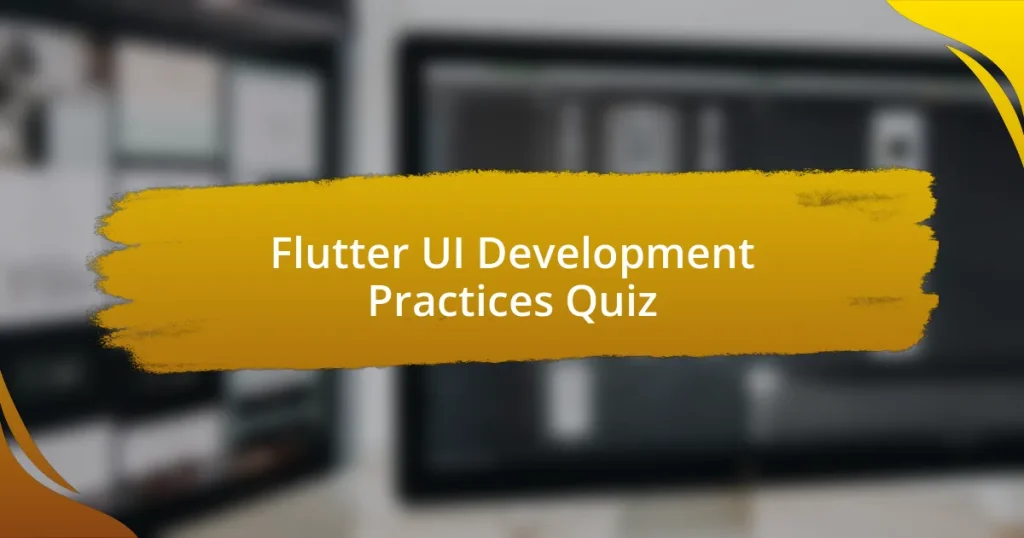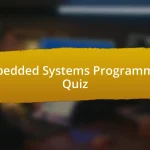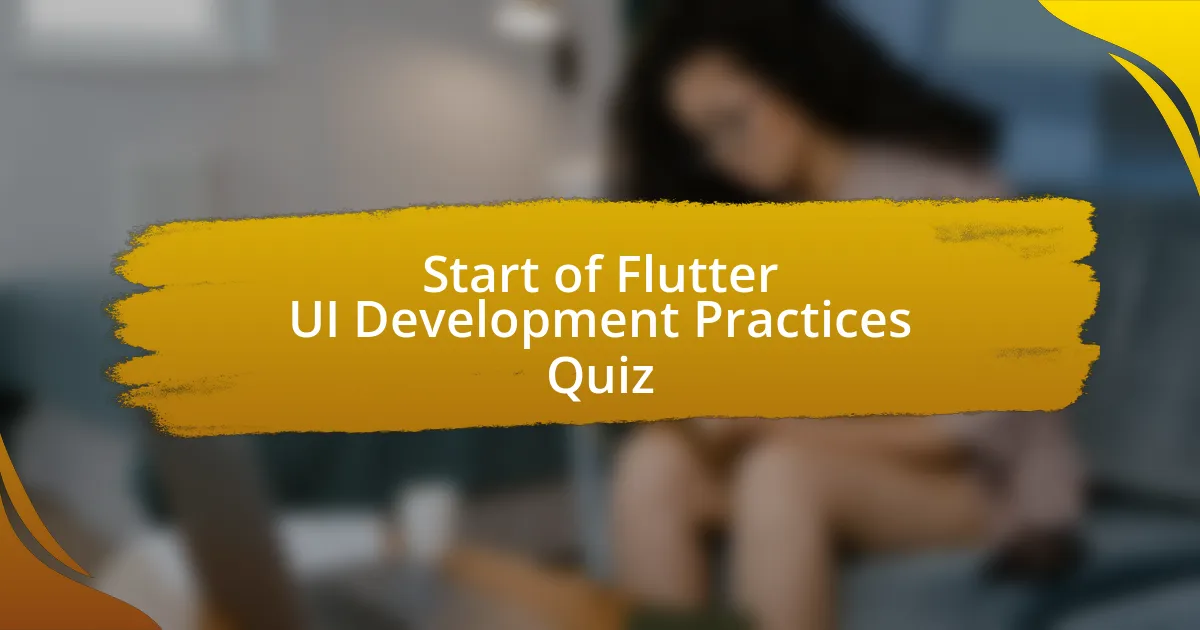
Start of Flutter UI Development Practices Quiz
1. What is the main use of the ‘setState’ method in Flutter?
- To enhance app performance with animations
- To update the UI in response to state changes
- To encrypt user data for security
- To fetch external data from APIs
2. How can the performance of a Flutter app be improved by using const Constructors?
- The `const` keyword reduces widget rebuilds by creating immutable widgets.
- `const` constructors slow down the performance of the app by adding complexity.
- The `const` keyword prevents the use of async calls in Flutter apps.
- Using `const` increases the size of the app by adding extra features.
3. What is the function of the `BuildContext` in a Flutter widget?
- The `BuildContext` is used to implement database connections.
- The `BuildContext` is for managing network requests.
- The `BuildContext` provides the location of a widget in the widget tree.
- The `BuildContext` determines the screen resolution of a device.
4. Why is it preferable to use a Stateless widget for displaying static data?
- Stateless widgets can update data dynamically in real-time.
- Stateful widgets handle static data more efficiently.
- Stateful widgets should be used for fixed content display.
- Stateless widgets are optimized for displaying static data.
5. What is the purpose of the Flutter `pubspec.yaml` file?
- To specify dependencies and configurations for the Flutter app.
- To define routes for navigation within the app.
- To manage user authentication settings.
- To store images and assets for the app.
6. How do you implement localization in a Flutter app?
- Create separate apps for different languages.
- Use the intl package for language translations.
- Hardcode strings in the UI for each language.
- Use only one language regardless of the user`s location.
7. What strategies can be used to manage dependencies in a Flutter project?
- Avoid using external libraries
- Use dependency management tools like pub.dev
- Write all code in one file
- Hardcode all dependencies in the app
8. How do you handle user inputs in Flutter forms?
- Use a StatelessWidget with only Text widgets
- Use a global variable for all form data
- Use only ListView without any TextFields
- Use a StatefulWidget with a Form and TextFormField
9. What is a Future in Dart and how is it related to Flutter?
- A Future is a synchronous execution model in Dart.
- A Future is a type of widget used for UI rendering.
- A Future is an object that represents the result of an asynchronous operation.
- A Future is an error handler in Flutter applications.
10. How can you implement custom themes in a Flutter application?
- Implement themes via Flutter`s default styles only.
- Use the ThemeData class to define your custom theme.
- Modify the main.dart file without using ThemeData.
- Custom themes can only be added through a separate package.
11. What is the difference between `mainAxisAlignment` and `crossAxisAlignment` in Flutter layout?
- `mainAxisAlignment` refers to horizontal layout only, and `crossAxisAlignment` refers to vertical layout only.
- `mainAxisAlignment` sets the direction of scrolling, whereas `crossAxisAlignment` sets the scrolling speed.
- `mainAxisAlignment` controls the alignment of children along the main axis, while `crossAxisAlignment` controls the alignment along the cross axis.
- `mainAxisAlignment` is for spacing between elements, and `crossAxisAlignment` is for defining the widget`s size.
12. How do you create a responsive UI in Flutter?
- Use MediaQuery to adapt layouts
- Avoid using responsive design altogether
- Use a single fixed size for all screens
- Create separate versions of the app for each device
13. What are mixins in Dart and how can they be used in Flutter?
- Mixins in Dart are a type of widget that manages app state.
- Mixins in Dart are only used for defining styles in Flutter.
- Mixins in Dart are used to create themes for UI components.
- Mixins in Dart are a way to reuse a class’s methods in multiple class hierarchies.
14. How can you prevent widget rebuilds to optimize performance in Flutter?
- Use the `const` keyword for immutable widgets.
- Use stateful widgets for every UI component.
- Write all UI directly in the build method.
- Avoid using separate widget classes in the layout.
15. Why is it important to follow the widget lifecycle in Flutter?
- It allows for smoother animations and transitions.
- It ensures efficient UI updates and resource management.
- It helps in managing user authentication processes effectively.
- It reduces the number of widgets available for general use.
16. How does Flutter`s `InheritedWidget` facilitate state management?
- It stores data permanently in the app’s memory.
- It provides a way for widgets to access data efficiently.
- It automatically rebuilds the entire app on state change.
- It creates a separate thread for state management.
17. What is the role of the `Navigator` in Flutter routing?
- The Navigator generates random numbers for user input.
- The Navigator creates UI animations for smooth transitions.
- The Navigator manages the app`s routing and navigation state.
- The Navigator handles HTTP requests to fetch data.
18. How can you handle platform-specific code in a Flutter application?
- Write all code in a single file for simplicity.
- Avoid using third-party packages completely.
- Use conditional imports based on the platform.
- Hardcode values for each platform directly.
19. What is the purpose of using `FutureBuilder` in Flutter?
- To return data from an asynchronous source and build widgets accordingly.
- To create static content without updates.
- To display images only in the app.
- To handle all user input directly.
20. How can you leverage Flutter`s `SharedPreferences` for local storage?
- Store large files directly in the app`s folder.
- Store data directly in memory without saving it.
- Use SharedPreferences to store key-value pairs.
- Use database connections in Flutter apps for local storage.
21. What is the significance of using package management in Flutter?
- It enhances hardware compatibility and support.
- It streamlines dependency management and updates.
- It complicates the development workflow significantly.
- It increases app size and installation time.
22. How do Gesture Detectors enhance user interaction in Flutter apps?
- Gesture Detectors automatically save user preferences in settings.
- Gesture Detectors enhance security by blocking unauthorized access.
- Gesture Detectors improve performance by reducing load times.
- Gesture Detectors allow user interaction through touch events.
23. What is the use of Flutter`s `ListView.builder` for performance efficiency?
- It loads all items at once to improve performance.
- It caches all items to prevent multiple loads.
- It preloads all items into memory for fast access.
- It creates items on demand, loading only what is visible.
24. How can you implement Dark Mode in a Flutter app?
- Use only black and white colors in the app.
- Use a theme that includes a dark mode option.
- Change the app’s primary color to black.
- Manually adjust each widget’s color.
25. What features does Flutter provide for asynchronous programming?
- Stateful widgets
- Synchronous functions
- Layout builders
- Streams and Future objects
26. How can you add custom animations to widgets in Flutter?
- Use raw HTML to create custom widget animations.
- Rely only on the default Flutter animations library.
- Implement SVG support for advanced animations.
- Use the AnimationController class to define animations.
27. What is the purpose of ‘WillPopScope’ in Flutter applications?
- To store persistent data locally.
- To manage the back navigation of the app.
- To create a new widget on the screen.
- To fetch data from the internet.
28. How do providers work in state management within Flutter apps?
- Providers manage state changes and notify widgets in Flutter applications.
- Providers only handle user inputs and not state management.
- Providers only serve static data and do not manage state.
- Providers are used to style widgets instead of managing state.
29. What is `StreamBuilder` and how is it used in Flutter?
- StreamBuilder is a widget in Flutter that helps manage data from streams and rebuilds UI when new data is available.
- StreamBuilder is a widget that displays video content in Flutter applications.
- StreamBuilder is a library designed for database connections in Flutter.
- StreamBuilder is a tool that helps with image compression in Flutter.
30. How can you test a Flutter widget for its visual design?
- Create an unordered list
- Review the code manually
- Use the `flutter test –update-goldens` command
- Use a random screenshot tool
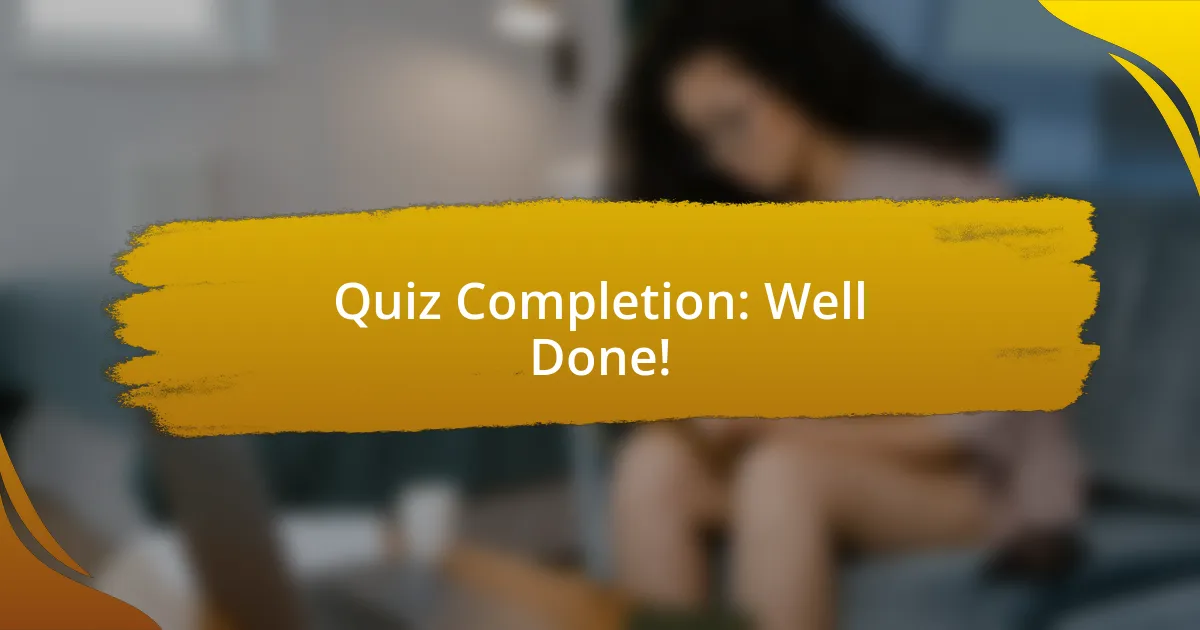
Quiz Completion: Well Done!
Congratulations on completing the quiz on Flutter UI Development Practices! This exercise was designed to enhance your understanding of various techniques and best practices related to Flutter. We hope you found it both enjoyable and educational. Quizzes are a great way to reinforce what you’ve learned and assess your knowledge. Each question pushed you to think critically about Flutter, from layout structures to widget usage.
Through this quiz, you likely discovered the importance of maintaining a clean and efficient codebase. You also learned about the benefits of responsive design, accessibility, and performance optimization. These concepts are essential for building user-friendly and highly functional applications. Much of what you explored can be directly applied to your projects, leading to improved development outcomes.
As you continue your journey in Flutter development, we invite you to check the next section on this page. Here, you will find more in-depth information about Flutter UI Development Practices. This resource will expand your knowledge and provide you with practical tips to implement in your work. Keep learning and pushing the boundaries of what you can achieve with Flutter!
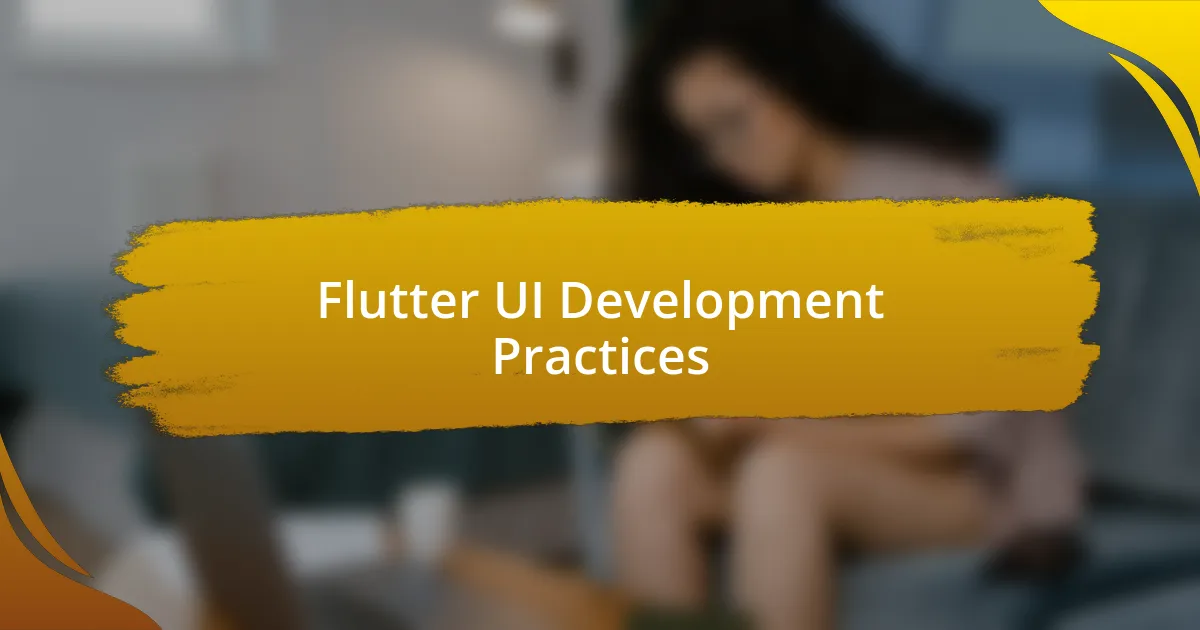
Flutter UI Development Practices
Understanding Flutter Framework
Flutter is an open-source UI software development toolkit created by Google. It is used to develop natively compiled applications for mobile, web, and desktop from a single codebase. Flutter boasts a rich set of customizable widgets that facilitate building user interfaces. Because of its reactive framework and fast rendering engine, developers can create smooth, visually appealing applications efficiently. It enhances productivity through features like hot reload, which allows developers to see changes in real-time.
Principles of Flutter UI Design
Flutter UI design principles emphasize material design for Android and Cupertino design for iOS. Material design uses shadow effects, layouts, and transitions to create hierarchy and depth. Cupertino design reflects iOS aesthetics, focusing on clarity and deference. Using these principles ensures that applications have a native look and feel. Following these guidelines helps maintain consistency and improves user experience across platforms.
Widget Composition in Flutter
Widget composition is a key concept in Flutter UI development. Rather than relying on a traditional MVC architecture, Flutter relies on a reactive programming model where each UI element is a widget. Widgets can be stateless or stateful, allowing for both static and dynamic content. Efficient composition of widgets allows developers to build complex UIs from simple components. This modularity facilitates code reuse and clarity while enhancing performance.
State Management Solutions in Flutter
State management is crucial for maintaining consistency in Flutter applications. Several solutions exist, including Provider, Riverpod, and BLoC. Each approach has unique advantages, such as ease of use, scalability, and separation of concerns. Choosing the right state management solution affects app performance and maintainability. Effective state management keeps the UI responsive to user interactions, ensuring a smooth experience.
Performance Optimization Techniques in Flutter UI
Performance optimization in Flutter UI development focuses on reducing jank and ensuring smooth animations. Techniques include minimizing widget rebuilds, using const constructors where applicable, and leveraging the Flutter DevTools for performance profiling. Another method is to utilize lazy loading for images and lists to conserve memory and improve rendering speed. These optimizations are essential for maintaining a responsive user interface, especially in resource-constrained environments.
What are best practices for Flutter UI development?
Best practices for Flutter UI development include using a widget-oriented approach, maintaining a clear structure with stateless and stateful widgets, optimizing performance through the use of const constructors, managing state effectively with providers or state management solutions, and ensuring responsive design by adopting layout widgets such as MediaQuery or LayoutBuilder. These practices promote maintainability and enhance the user experience, as evidenced by their common usage in numerous successful Flutter applications.
How can one optimize Flutter app performance?
One can optimize Flutter app performance by minimizing widget rebuilds, using the const constructor for immutable widgets, and leveraging the Flutter DevTools for performance profiling. Additionally, implementing lazy loading for images and lists can significantly improve perceived performance. Research indicates that efficient coding practices and tool usage can reduce frame drops and enhance app responsiveness.
Where can developers find resources for learning Flutter UI development practices?
Developers can find resources for learning Flutter UI development practices on the official Flutter website, which offers comprehensive documentation, tutorials, and samples. Platforms like Udemy, Coursera, and YouTube also host numerous video courses and guides. The active Flutter community on GitHub and forums like Stack Overflow provide additional insights and support from experienced developers.
When should Flutter developers use state management solutions?
Flutter developers should use state management solutions when their applications require managing complex states across multiple widgets or screens. As applications scale, managing states effectively helps maintain code readability and functionality. Common state management solutions include Provider, Riverpod, and Bloc, each suited to specific use cases determined by application needs.
Who are the prominent figures in the Flutter development community?
Prominent figures in the Flutter development community include Google’s Flutter team members, such as Paul Halliday and Eric Seidel, who contribute to the framework’s development. Influential community contributors like FilledStacks and Reso Coder share valuable resources and tutorials, making significant impacts on how developers learn and implement Flutter practices. Their contributions help shape the best practices within the community.











